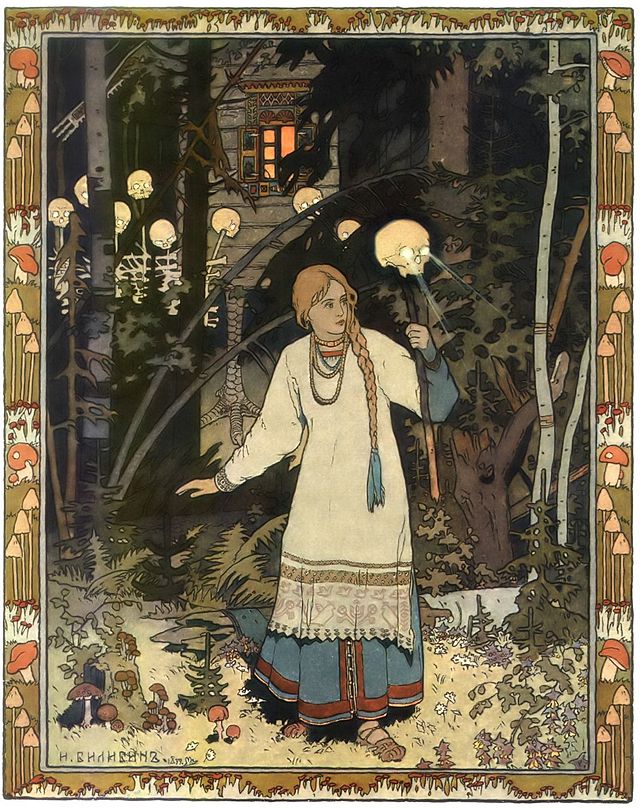The Water of Death, The Water of Life
 Monday, December 29, 2014 at 2:27PM
Monday, December 29, 2014 at 2:27PM From the tale "Marya Morevna":
Koshchei the Deathless was returning home when his good steed stumbled beneath him.
“Why stumblest thou? scentest thou any ill?”
“Prince Ivan has come and has carried off Marya Morevna.”
Koshchei galloped off, caught Prince Ivan, chopped him into little pieces, put them in a barrel, smeared it with pitch and bound it with iron hoops, and flung it into the blue sea. But Marya Morevna he carried off home.
At that very time, the silver turned black which Prince Ivan had left with his brothers-in-law.
“Ah!” said they, “the evil is accomplished sure enough!”
Then the Eagle hurried to the blue sea, caught hold of the barrel, and dragged it ashore; the Falcon flew away for the Water of Life, and the Raven for the Water of Death.
Afterwards they all three met, broke open the barrel, took out the remains of Prince Ivan, washed them, and put them together in fitting order. The Raven sprinkled them with the Water of Death—the pieces joined together, the body became whole. The Falcon sprinkled it with the Water of Life—Prince Ivan shuddered, stood up, and said:
“Ah! what a time I’ve been sleeping!”
“You’d have gone on sleeping a good deal longer, if it hadn’t been for us,” replied his brothers-in-law.
And Ralston weighs in with his own observations:
A Water of Life plays an important part in the folk-tales of every land.[297] When the hero of a “fairy story” has been done to death by evil hands, his resuscitation by means of a healing and vivifying lotion or ointment[298] follows almost as a matter of course. And by common consent the Raven (or some sort of crow) is supposed to know where this invaluable specific is to be found,[299] a knowledge which it shares with various supernatural beings as well as with some human adepts in magic, and sometimes with the Snake. In all these matters the Russian and the Western tales agree, but the Skazka differs from most stories of its kind in this respect, that it almost invariably speaks of two kinds of magic waters as being employed for the restoration of life. We have already seen in the story of “Marya Morevna,” that one of these, sometimes called the mertvaya voda—the “dead water,” or “Water of Death”—when sprinkled over a mutilated corpse, heals all its wounds; while the other, which bears the name of the zhivaya voda,—the “living water,” or “Water of Life”—endows it once more with vitality.
...
As a general rule, the two waters of which mention is made in the Skazkas possess the virtues, and are employed in the manner, mentioned above; but there are cases in which their powers are of a different nature. Sometimes we meet with two magic fluids, one of which heals all wounds, and restores sight to the blind and vigor to the cripple, while the other destroys all that it touches. Sometimes, also, recourse is had to magic draughts of two kinds, the one of which strengthens him who quaffs it, while the other produces the opposite effect. Such liquors as these are known as the “Waters of Strength and Weakness,” and are usually described as being stowed away in the cellar of some many-headed Snake. For the Snake is often mentioned as the possessor, or at least the guardian, of magic fluids.
